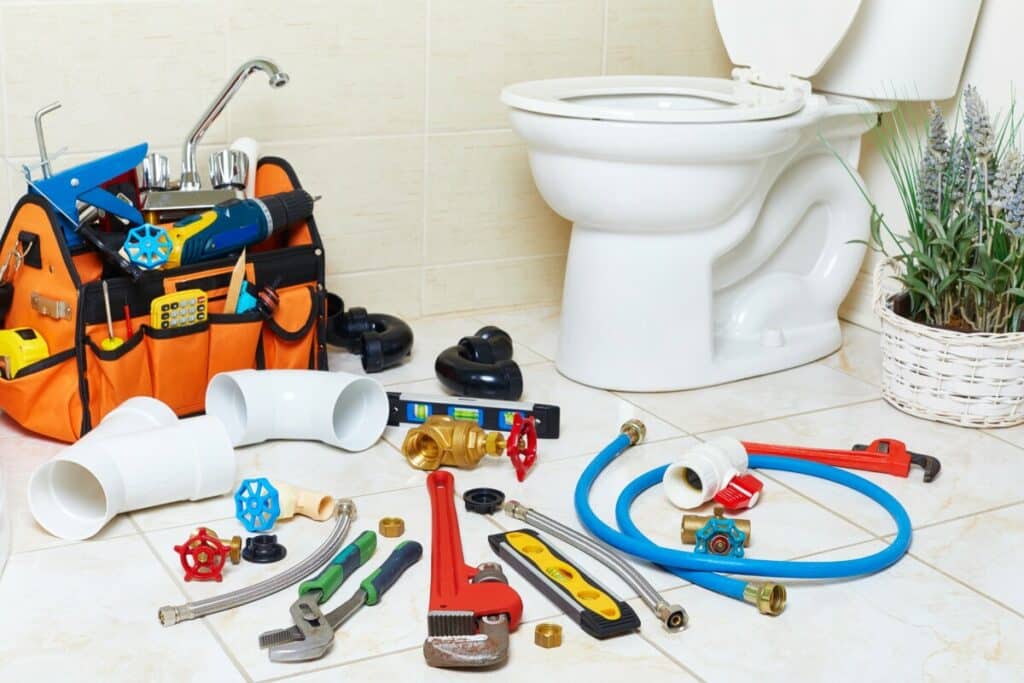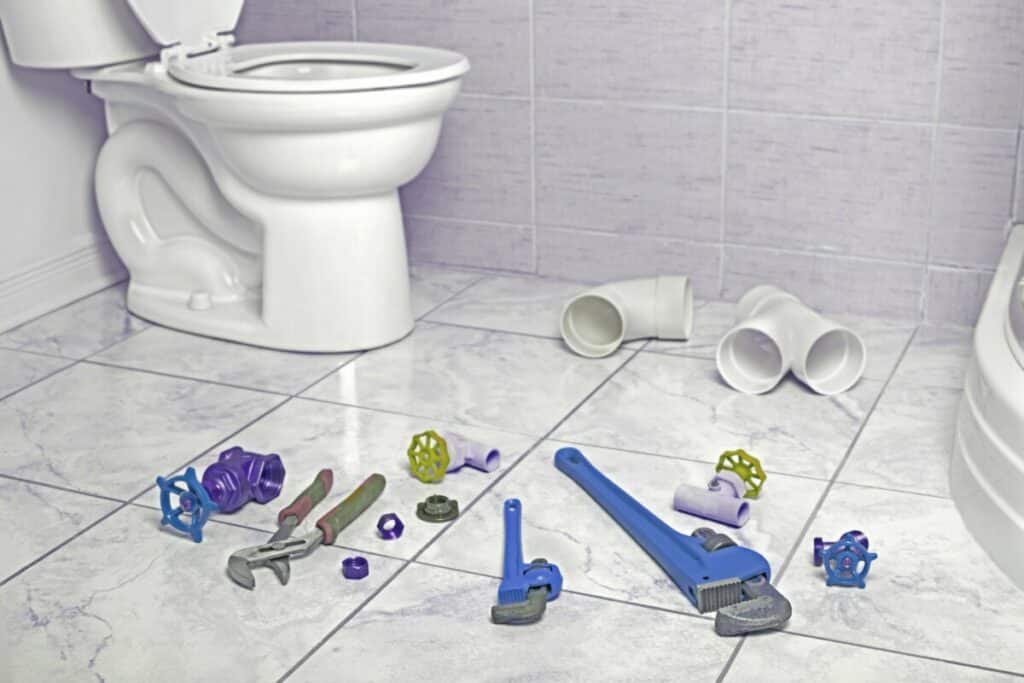4 Solutions If Your Toilet Flange Is Too High
Last Updated on September 19, 2022 by Alex Cubias
Is your toilet flange too high? Are you worried about water leaking? Are you concerned about the toilet moving around when sitting down? If you are finding yourself with an issue with your toilet flange, this article can help you find some solutions to help prevent leaking and rocking back and forth.
To learn about 4 solutions to fix your toilet flange that is too high, keep reading.

Why Does It Matter?
A toilet flange is a ring that is either made of PVC, metal, or rubber, that surrounds the base of the toilet where it connects with the floor and makes sure it is centered on the pipe in the floor. This helps prevent two major things from happening: the toilet from rocking back and forth while in use as well as any leaking from the water coming through the pipe in the floor. (Source)
The toilet flange also helps with the ease of cleaning the base of the toilet. Without the flange, there would be a nooked, open crevice between the base of the toilet and the floor, which is bound to collect dust and debris and would be difficult to keep clean. The flange creates a flat, easy-to-clean surface, which keeps you from having to dig around the base of the toilet to clean it.
The toilet flange can be too high due to a few reasons. One of those reasons is if you have had the floors in your bathrooms replaced recently, the flange may have been lifted up or away from the floor or the base of the toilet, making it useless. Another reason is if the toilet was installed improperly. If the flange wasn’t properly sealed down to the floor during installation, that will have a poor effect on its performance.
1. Raising the Floor
Raising the floor is a way to fill in that extra space between the floor and the base of the toilet. It is a more intense, time-consuming, and expensive way to fix the issue. If you are planning on installing new flooring in the bathroom, this would be a great time to do it.
Tile is a smart way to add height to the current flooring. You would need to measure the space between the toilet and the floor and purchase the size of tile that matches the rest of your tile. If you are not wanting to have tile flooring in the bathroom, consider another thick type of flooring to get that added height you need.
Once that flooring is laid, whatever kind you decide to use, make sure that the base of the toilet is grouted around to seal it to the floor so that it is extra secure to avoid any water getting out. Check and make sure that all the tile around the base of the toilet is level to avoid any rocking when you sit on the toilet. (Source)
2. Cutting the Pipe
Cutting down the pipe should be your last resort, as you will need to remove the toilet as well as the flange to do so. To cut the pipe, use a saw to cut the pipe so it is level with the floor once you remove the toilet. You can either use that same flange or buy a new one and replace it while the toilet is off the pipe.
Replacing the flange may be helpful, even if it isn’t ready to be replaced quite yet. That will save you from having to take the toilet off again. Once the flange has been placed, make sure it is level with the floor before you put the toilet back on. If it doesn’t fit, do not replace or use the toilet until the flange is on. (Source)
It is important to note that you cannot cut the flange itself down to make it fit. You will have to buy the right size flange for your particular toilet. Cutting the flange down will not only decrease the integrity of the flange, but it is also extremely difficult to get an accurate height that is needed to be effective.
3. Fill the Gap

If the floor is just not quite high enough to reach the flange, but the gap is too small for installing tile to do any good, you can fill in the gap with grout and that should create enough of a filling to suction the flange to the floor. The process is fairly similar to grouting tile.
You will first need to mix the grout, you won’t need a lot if you are just doing it around the base of one toilet. It would be smart to use some sort of shim to prevent the toilet from moving around while you are trying to grout around it. You will want to pack the grout in heavily, but evenly, all the way around the base of the toilet.
Once you have the grouting done, do not touch the grout or remove the shims for 24 hours while the grout sets and drys. When the time is up, you can remove the shims and bolt down the toilet again. (Source)
4. Replace the Flange
A flange that is too high won’t do you any good. You can simply replace the flange by properly measuring the space between the floor and the base of the toilet, which will indicate the size of the flange that is needed for your toilet specifically. You can find them at most home improvement stores. It is possible to do this yourself, but if you feel that you would be more comfortable with a professional doing it, you can call a local plumber to install it for you.
This solution is the easiest if the current flange has been installed incorrectly or was installed with the wrong size. Installing the right size flange should prevent any rocking and leaking. When installing the new flange, it is important to make sure that it is not only the right size but that it is securely put in place. It may be the right size, but if it is not suctioned onto the floor and base of the toilet sufficiently, the same issues that happen when a flange is too high can occur.
Related Article: Replace a Toilet Flange in 6 Easy Steps